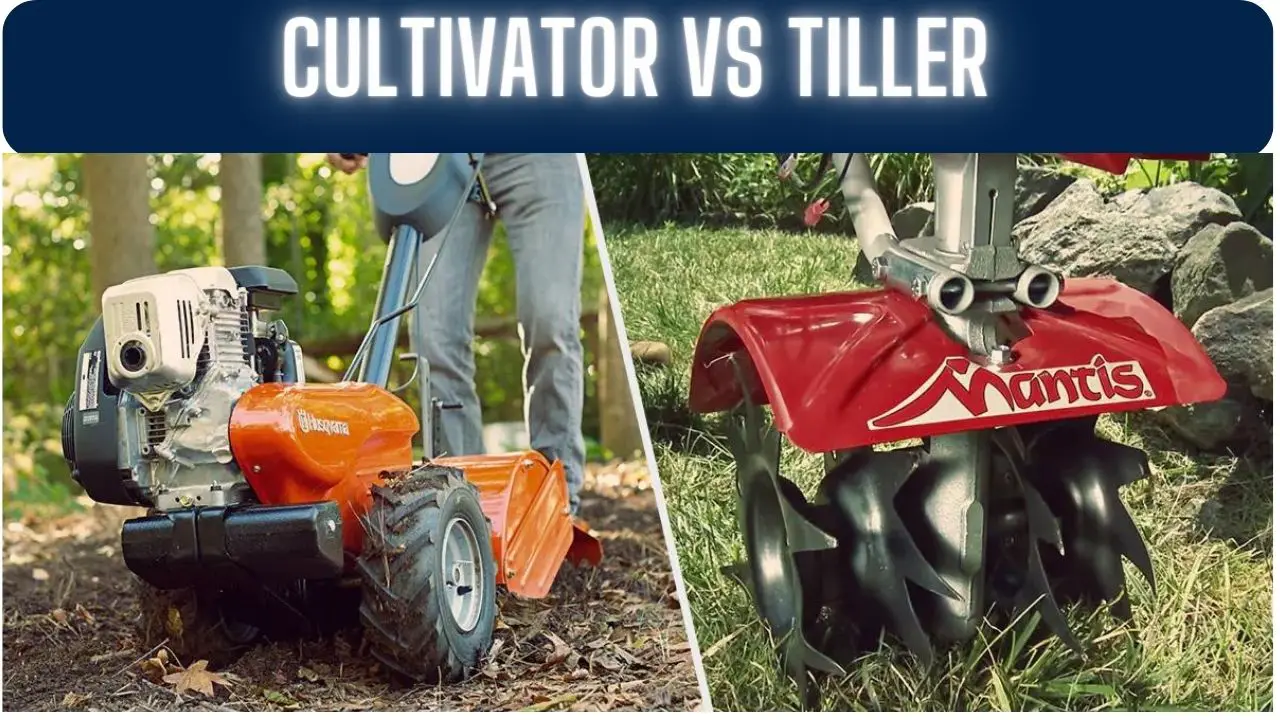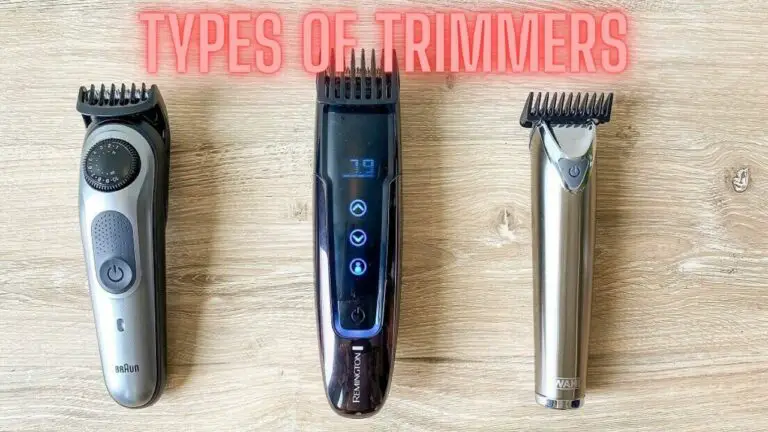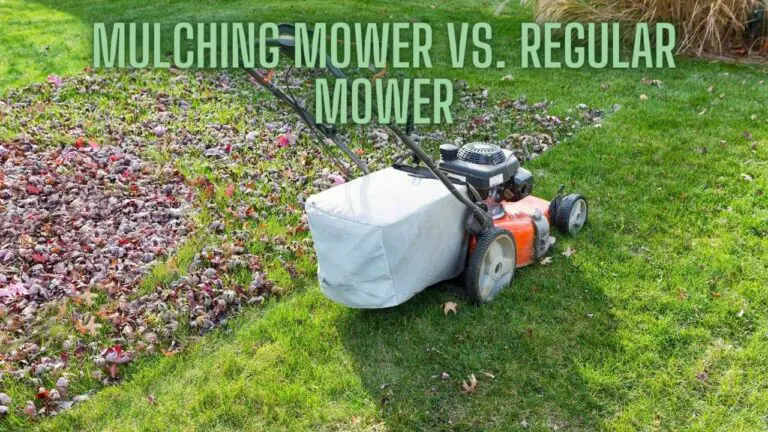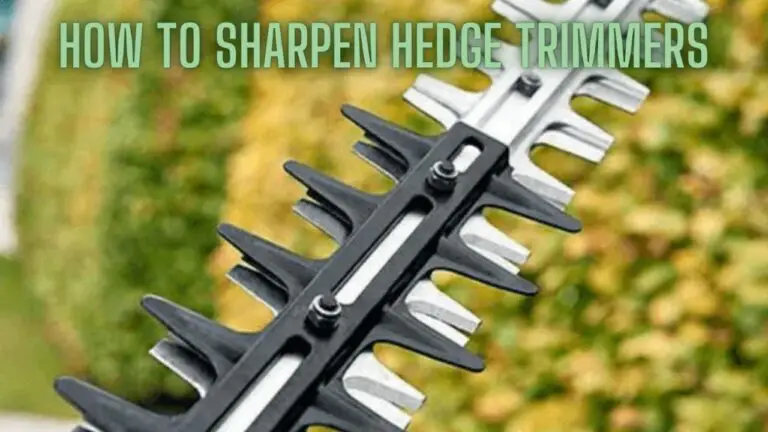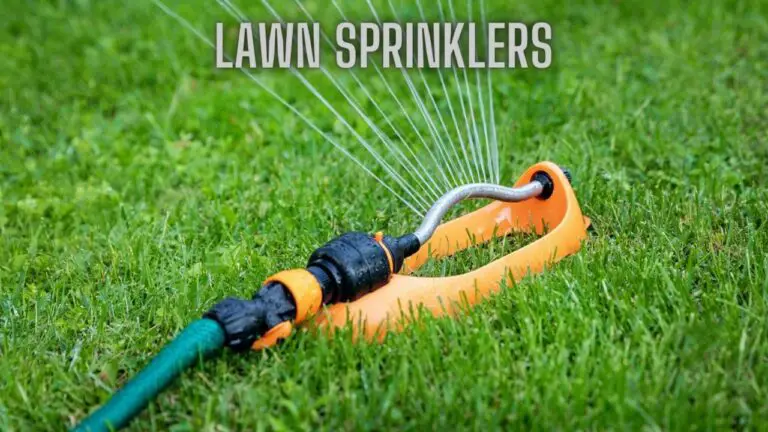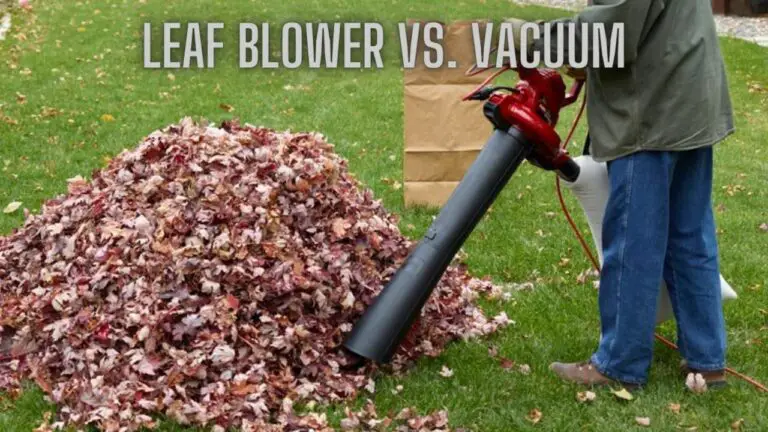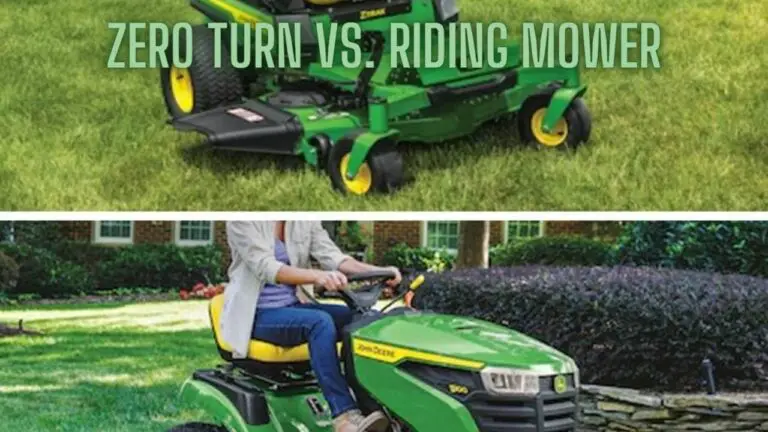Cultivator vs. Tiller: Unveiling the Differences and Best Uses
Introduction
Cultivators and tillers are both important tools used in gardening and agriculture to prepare soil for planting. While they may appear similar, there are distinct differences in their design, purpose, and functionality. Understanding the characteristics of cultivators and tillers is essential for selecting the right tool for specific gardening tasks.
Here’s an introduction to cultivators and tillers:
- Cultivator:
- A cultivator is a gardening tool designed for light-duty soil preparation and weed control.
- It typically consists of multiple tines or blades attached to a rotating shaft.
- Cultivators are used for loosening and aerating soil, breaking up clumps, and removing weeds.
- They are often smaller, lighter, and more maneuverable compared to tillers, making them suitable for smaller garden plots, flower beds, and raised beds.
- Cultivators are primarily used for surface-level soil cultivation and are not intended for deep digging or soil inversion.
- Tiller:
- A tiller, also known as a rototiller or rotary tiller, is a heavy-duty gardening tool used for deeper soil preparation and ground breaking.
- It features a set of rotating blades or tines powered by an engine or motor.
- Tillers are capable of breaking through compacted soil, mixing in organic matter, and preparing large areas of land for planting.
- They come in various sizes and configurations, including front-tine, rear-tine, and walk-behind models, each suited for different soil types and applications.
- Tillers are more powerful and efficient than cultivators, making them suitable for larger gardens, vegetable plots, and agricultural fields where deep soil cultivation is required.
In summary, cultivators are lightweight tools ideal for surface-level soil cultivation and weed control in small garden areas, while tillers are heavy-duty machines designed for deep soil preparation and ground breaking in larger garden plots and agricultural fields. Understanding the differences between cultivators and tillers is essential for selecting the right tool to meet specific gardening needs and achieve optimal soil preparation results.
Purpose and Function of Cultivators and Tillers
Cultivators and tillers serve distinct purposes in gardening and agriculture, each with specific functions tailored to different soil preparation tasks. Here’s an overview of their purpose and function:
- Cultivator:
- Purpose: Cultivators are primarily used for light-duty soil cultivation, weed control, and surface-level preparation.
- Function:
- Loosening Soil: Cultivators use rotating tines or blades to break up compacted soil, aerate the ground, and create a loose, friable texture.
- Weed Control: Cultivators are effective at uprooting weeds and incorporating organic matter into the soil surface, helping to suppress weed growth.
- Mixing Soil Amendments: They can be used to mix in compost, fertilizer, or other soil amendments to improve soil structure and fertility.
- Seedbed Preparation: Cultivators are suitable for preparing seedbeds, leveling the soil surface, and creating a conducive environment for seed germination and plant growth.
- Application: Cultivators are commonly used in smaller garden plots, flower beds, vegetable gardens, and raised beds where light cultivation and weed control are required.
- Tiller:
- Purpose: Tillers are heavy-duty machines designed for deep soil cultivation, ground breaking, and intensive soil preparation.
- Function:
- Breaking Soil: Tillers use powerful rotating blades or tines to penetrate deeply into the soil, breaking up compacted earth and preparing the ground for planting.
- Soil Inversion: They are capable of turning over the top layer of soil, bringing nutrient-rich subsoil to the surface and burying weeds and debris.
- Incorporating Amendments: Tillers can effectively mix in compost, manure, lime, or other soil conditioners to improve soil fertility and structure throughout the entire planting area.
- Large-Scale Preparation: Tillers are suitable for preparing larger garden plots, agricultural fields, and landscaping projects where extensive soil cultivation and ground preparation are necessary.
- Application: Tillers are commonly used in vegetable gardens, row cropping, landscaping, and agricultural operations where deep soil cultivation and ground breaking are essential for successful planting and crop production.
In summary, cultivators are lightweight tools ideal for light-duty soil cultivation, weed control, and surface-level preparation in smaller garden areas, while tillers are heavy-duty machines designed for deep soil cultivation, ground breaking, and intensive soil preparation in larger garden plots and agricultural fields. Understanding the purpose and function of cultivators and tillers helps gardeners and farmers select the right tool for specific soil preparation tasks and achieve optimal results in their gardening and farming endeavors.
Design and Features of Cultivators and Tillers
Cultivators and tillers have distinct designs and features tailored to their specific functions and intended applications in gardening and agriculture. Here’s an overview of the design and features of each:
- Cultivator:
- Design: Cultivators typically have a lightweight and compact design, making them easy to maneuver in smaller garden areas.
- Tines: Cultivators feature multiple rotating tines or blades attached to a shaft. These tines may be made of metal or durable plastic and are designed to loosen soil and uproot weeds when in operation.
- Handle: Most cultivators are equipped with a handlebar or grip for comfortable operation and control. Some models may feature adjustable handle heights for user convenience.
- Power Source: Cultivators are powered by various sources, including electric motors, gas engines, or human power (manual operation). Electric cultivators are typically corded or cordless, offering convenience and ease of use in small garden spaces.
- Adjustable Depth: Some cultivators feature adjustable tine depth settings, allowing users to customize the depth of soil cultivation based on their specific gardening needs.
- Size and Portability: Cultivators are generally smaller and more portable than tillers, making them suitable for use in confined spaces such as flower beds, vegetable gardens, and raised beds.
- Tiller:
- Design: Tillers are heavier and more robust machines designed for deep soil cultivation and ground breaking in larger garden plots and agricultural fields.
- Blades or Tines: Tillers are equipped with heavy-duty rotating blades or tines that penetrate deeply into the soil, breaking up compacted earth and preparing the ground for planting. These blades may be arranged in front-tine, rear-tine, or dual-directional configurations, depending on the model.
- Engine or Motor: Tillers are typically powered by gas engines, although electric models are also available for lighter-duty applications. Gas-powered tillers provide greater power and versatility, making them suitable for demanding soil preparation tasks.
- Handlebars: Tillers feature ergonomic handlebars with controls for starting, stopping, and steering the machine. Some models may have adjustable handle heights and padded grips for enhanced comfort during operation.
- Wheels or Tires: Many tillers are equipped with wheels or tires to facilitate movement and maneuverability across various types of terrain. Some models may feature pneumatic tires for improved traction and stability.
- Adjustable Depth and Width: Most tillers offer adjustable depth and width settings, allowing users to customize the depth and width of soil cultivation to suit their specific planting requirements and soil conditions.
- Size and Weight: Tillers are larger and heavier than cultivators, requiring more storage space and transportation considerations. However, they offer greater power and capability for intensive soil preparation tasks in larger garden areas and agricultural fields.
In summary, cultivators feature a lightweight and compact design with rotating tines for light-duty soil cultivation and weed control in smaller garden spaces. Tillers, on the other hand, are heavier machines with powerful engines or motors and heavy-duty blades or tines for deep soil cultivation and ground breaking in larger garden plots and agricultural fields. Understanding the design and features of cultivators and tillers helps gardeners and farmers select the right tool for their specific soil preparation needs and gardening requirements.
Working Mechanism of Cultivators and Tillers
Cultivators and tillers operate on different principles and mechanisms to achieve soil cultivation and preparation. Understanding their working mechanisms is essential for using these tools effectively in gardening and agriculture. Here’s how cultivators and tillers work:
- Cultivator:
- Rotating Tines: Cultivators are equipped with multiple rotating tines or blades attached to a shaft. These tines penetrate the soil surface and break up compacted earth, loosening the soil and creating a loose, friable texture.
- Powered Rotation: Cultivators are powered by various sources, including electric motors, gas engines, or manual operation. The rotating tines are driven by the power source, causing them to spin and churn the soil as they move through the garden bed or plot.
- Surface-Level Cultivation: Cultivators are designed for surface-level soil cultivation and weed control. They work by aerating the soil, uprooting weeds, and mixing in organic matter without disturbing the soil structure or profile too deeply.
- Maneuverability: Cultivators are lightweight and maneuverable, making them easy to operate in smaller garden areas, flower beds, and raised beds. They are ideal for maintaining soil health and preparing seedbeds for planting without excessive soil disturbance.
- Tiller:
- Rotating Blades or Tines: Tillers feature heavy-duty rotating blades or tines that penetrate deeply into the soil, breaking up compacted earth and preparing the ground for planting. These blades are driven by a powerful engine or motor mounted on the tiller.
- Engine Power: Tillers are typically powered by gas engines, although electric models are also available for lighter-duty applications. Gas-powered tillers provide high torque and rotational force, enabling them to work effectively in tough soil conditions.
- Deep Soil Cultivation: Tillers are designed for deep soil cultivation and ground breaking. They work by overturning the top layer of soil, bringing nutrient-rich subsoil to the surface and burying weeds and debris in the process.
- Adjustable Depth and Width: Many tillers offer adjustable depth and width settings, allowing users to customize the depth and width of soil cultivation based on their specific planting requirements and soil conditions.
- Large-Scale Preparation: Tillers are suitable for preparing larger garden plots, agricultural fields, and landscaping projects where extensive soil cultivation and ground breaking are necessary. They are capable of handling intensive soil preparation tasks efficiently and effectively.
In summary, cultivators use rotating tines to aerate the soil and uproot weeds for surface-level cultivation in smaller garden areas, while tillers utilize powerful engines and rotating blades to penetrate deeply into the soil, preparing the ground for planting and ground breaking in larger garden plots and agricultural fields. Understanding the working mechanisms of cultivators and tillers helps gardeners and farmers select the right tool for their specific soil preparation needs and achieve optimal results in their gardening and farming endeavors.
Depth and Width of Operation of Cultivators and Tillers
Cultivators and tillers differ in their capabilities regarding the depth and width of soil cultivation and preparation. These factors are crucial considerations when selecting the right tool for specific gardening tasks. Here’s an overview of the depth and width of operation for cultivators and tillers:
- Cultivator:
- Depth of Operation: Cultivators are designed for surface-level soil cultivation and typically operate at shallow depths. The depth of operation for cultivators ranges from a few inches to several inches below the soil surface, depending on the model and the adjustable depth settings.
- Surface-Level Cultivation: Cultivators are most effective for loosening and aerating the top layer of soil, breaking up clumps, and incorporating organic matter without disturbing the soil profile too deeply. They are ideal for seedbed preparation, weed control, and maintaining soil health in smaller garden areas, flower beds, and raised beds.
- Width of Operation: Cultivators have a relatively narrow width of operation compared to tillers. The width of operation typically ranges from 6 inches to 12 inches, allowing for precise cultivation in confined spaces and around plants.
- Tiller:
- Depth of Operation: Tillers are capable of deeper soil cultivation and ground breaking compared to cultivators. The depth of operation for tillers ranges from several inches to over a foot below the soil surface, depending on the model and the adjustable depth settings.
- Deep Soil Cultivation: Tillers excel at penetrating deeply into the soil, breaking up compacted earth, and preparing the ground for planting. They are suitable for turning over the top layer of soil, bringing nutrient-rich subsoil to the surface, and burying weeds and debris in the process.
- Width of Operation: Tillers have a wider width of operation compared to cultivators, allowing for more efficient soil preparation in larger garden plots and agricultural fields. The width of operation typically ranges from 12 inches to 36 inches or more, depending on the model and configuration.
In summary, cultivators are suitable for surface-level soil cultivation and weed control at shallow depths and narrow widths of operation, making them ideal for smaller garden areas and flower beds. Tillers, on the other hand, are capable of deeper soil cultivation and ground breaking at wider widths of operation, making them suitable for larger garden plots, vegetable gardens, and agricultural fields where extensive soil preparation is required. Understanding the depth and width of operation of cultivators and tillers helps gardeners and farmers select the right tool for their specific soil preparation needs and achieve optimal results in their gardening and farming endeavors.
Types of Soil and Applications
Different types of soil require varying levels of cultivation and preparation to create an optimal growing environment for plants. Cultivators and tillers are used in various soil types and gardening applications to achieve desired results. Here are common types of soil and their respective applications for cultivators and tillers:
- Loamy Soil:
- Description: Loamy soil is a well-balanced soil type consisting of a mixture of sand, silt, and clay particles. It is fertile, well-draining, and retains moisture, making it ideal for gardening.
- Applications:
- Cultivators: Cultivators are effective at maintaining soil health, aerating the soil, and incorporating organic matter into loamy soil. They help improve soil structure and fertility, making it easier for plants to establish roots and thrive.
- Tillers: Tillers are used for deep soil cultivation and ground breaking in loamy soil to prepare large garden plots, vegetable gardens, and agricultural fields for planting. They help loosen compacted earth, improve drainage, and promote root growth.
- Clay Soil:
- Description: Clay soil is heavy and dense, composed of fine particles that retain water and nutrients but may become compacted and poorly aerated.
- Applications:
- Cultivators: Cultivators can be used to break up clumps and aerate clay soil, improving its structure and promoting better drainage and root penetration. They are effective for surface-level cultivation and weed control in clay soil.
- Tillers: Tillers are essential for deep soil cultivation and breaking up compacted clay soil to create a more conducive environment for planting. They help improve soil aeration, drainage, and root development in clay soil.
- Sandy Soil:
- Description: Sandy soil is loose and well-draining, composed of large particles that do not retain water or nutrients well.
- Applications:
- Cultivators: Cultivators are suitable for incorporating organic matter into sandy soil, improving its fertility, and enhancing moisture retention. They help create a more stable soil structure and promote better root growth in sandy soil.
- Tillers: Tillers can be used in sandy soil to mix in compost, fertilizer, or other soil amendments and prepare the ground for planting. They help improve soil fertility, water retention, and nutrient availability in sandy soil.
- Rocky Soil:
- Description: Rocky soil contains a high proportion of rocks, stones, and gravel, making it difficult to cultivate and plant.
- Applications:
- Cultivators: Cultivators are limited in their effectiveness in rocky soil due to the presence of obstacles and hard surfaces. They may be used for surface-level cultivation and weed control in areas with fewer rocks and stones.
- Tillers: Tillers may be used cautiously in rocky soil to break up smaller rocks and prepare planting areas between larger rocks. However, excessive rocks and stones can damage tiller blades and hinder effective soil cultivation.
In summary, cultivators and tillers are versatile tools used in various soil types and gardening applications to prepare soil for planting. Understanding the characteristics of different soil types and selecting the appropriate tool for the job helps gardeners and farmers achieve optimal results in their gardening and farming endeavors.
Size and Portability
Cultivators and tillers come in different sizes and portability levels, which influence their ease of use, maneuverability, and suitability for specific gardening tasks. Here’s an overview of the size and portability of cultivators and tillers:
- Cultivator:
- Size: Cultivators are generally smaller and more compact compared to tillers. They typically have a lightweight design and a narrower working width, ranging from 6 inches to 12 inches, depending on the model.
- Portability: Cultivators are designed for ease of use and maneuverability in smaller garden spaces. They are lightweight and portable, making them easy to transport and operate in confined areas such as flower beds, vegetable gardens, and raised beds.
- Storage: Cultivators require minimal storage space and can be stored in a garage, shed, or garden tool storage area when not in use. Some models may feature foldable handles or detachable components for compact storage.
- Tiller:
- Size: Tillers are larger and heavier machines compared to cultivators. They have a wider working width, ranging from 12 inches to 36 inches or more, depending on the model and configuration.
- Portability: Tillers are less portable than cultivators due to their size and weight. They may require additional effort to transport and maneuver, especially in tight spaces or uneven terrain.
- Transportation: Tillers may be equipped with wheels or tires to facilitate transportation from one location to another. Some models may feature handles or towing attachments for towing behind a lawn tractor or ATV.
- Storage: Tillers require more storage space than cultivators due to their larger size. They may be stored in a garage, barn, or equipment shed when not in use. Some models may feature folding handles or collapsible components for more compact storage.
In summary, cultivators are smaller, lighter, and more portable than tillers, making them suitable for use in smaller garden areas and confined spaces. They are easy to transport and maneuver, making them ideal for maintaining soil health and preparing seedbeds in flower beds, vegetable gardens, and raised beds. Tillers, on the other hand, are larger, heavier, and less portable than cultivators, but they offer greater power and capability for deep soil cultivation and ground breaking in larger garden plots and agricultural fields. Understanding the size and portability of cultivators and tillers helps gardeners and farmers select the right tool for their specific soil preparation needs and gardening requirements.
Power Source of Cultivators and Tillers
Cultivators and tillers can be powered by various sources, including electricity, gasoline, or human effort. The choice of power source affects the tool’s performance, convenience, and suitability for specific gardening tasks. Here’s an overview of the power sources commonly used for cultivators and tillers:
- Electric Cultivators and Tillers:
- Description: Electric cultivators and tillers are powered by electricity, typically through a corded connection to a power outlet or a rechargeable battery.
- Performance: Electric models offer reliable performance with consistent power output. They are quieter and produce zero emissions compared to gasoline-powered models.
- Convenience: Corded electric cultivators and tillers require access to a power outlet and may be limited by the length of the power cord. Cordless electric models offer greater flexibility and maneuverability but may have limited battery life.
- Suitability: Electric cultivators and tillers are suitable for light to moderate soil cultivation tasks in smaller garden areas, flower beds, and raised beds where access to electricity is readily available.
- Gasoline-Powered Cultivators and Tillers:
- Description: Gasoline-powered cultivators and tillers are equipped with gasoline engines that provide the necessary power for soil cultivation.
- Performance: Gasoline models offer high torque and power output, making them suitable for heavy-duty soil preparation tasks in larger garden plots and agricultural fields.
- Convenience: Gasoline-powered cultivators and tillers provide greater flexibility and mobility compared to electric models. They do not require access to electricity, allowing for operation in remote areas.
- Maintenance: Gasoline engines require regular maintenance, including fueling, oil changes, and engine tune-ups, to ensure optimal performance and longevity.
- Suitability: Gasoline-powered cultivators and tillers are suitable for intensive soil cultivation, ground breaking, and landscaping projects where deep soil penetration and high power output are required.
- Manual Cultivators:
- Description: Manual cultivators, also known as hand cultivators or hand tillers, are operated by human effort without the need for external power sources.
- Performance: Manual cultivators are limited in power and efficiency compared to electric or gasoline-powered models. They are best suited for light-duty soil cultivation and weed control in small garden areas.
- Convenience: Manual cultivators are lightweight, portable, and easy to use. They do not require fuel or electricity, making them environmentally friendly and cost-effective.
- Suitability: Manual cultivators are suitable for small-scale gardening tasks such as aerating soil, weeding, and mixing in compost or fertilizer in flower beds, vegetable gardens, and raised beds.
In summary, cultivators and tillers can be powered by electricity, gasoline, or human effort, each with its advantages and limitations. Electric models offer convenience and environmental benefits, gasoline-powered models provide high power output and mobility, and manual models offer simplicity and cost-effectiveness. Understanding the power source options for cultivators and tillers helps gardeners and farmers select the right tool for their specific soil preparation needs and gardening requirements.
Considerations for Choosing Between Cultivator and Tiller
Choosing between a cultivator and a tiller depends on various factors, including the size of the garden, the type of soil, the depth of cultivation required, and personal preferences. Here are some key considerations to help you decide between a cultivator and a tiller:
- Garden Size:
- Cultivator: Ideal for small to medium-sized gardens, flower beds, and raised beds where space is limited.
- Tiller: Suitable for larger garden plots, vegetable gardens, and agricultural fields with more extensive soil preparation needs.
- Soil Type:
- Cultivator: Effective for light-duty soil cultivation, weed control, and surface-level preparation in loamy, sandy, or clay soils.
- Tiller: Suitable for heavy-duty soil cultivation, ground breaking, and deep penetration in compacted or clay soils.
- Depth of Cultivation:
- Cultivator: Performs surface-level cultivation and aerates the top layer of soil, typically up to several inches deep.
- Tiller: Capable of deeper soil penetration and ground breaking, reaching depths of several inches to over a foot depending on the model.
- Power Source:
- Electric Models: Offer convenience and ease of use for light to moderate soil cultivation tasks in smaller garden areas.
- Gasoline-Powered Models: Provide high power output and mobility for heavy-duty soil preparation tasks in larger garden plots and agricultural fields.
- Manual Models: Suitable for small-scale gardening tasks and environmentally friendly, but limited in power and efficiency.
- Portability:
- Cultivator: Lightweight and portable, making it easy to transport and maneuver in confined spaces.
- Tiller: Larger and heavier, requiring more effort to transport and maneuver, especially in tight spaces or uneven terrain.
- Maintenance:
- Electric Models: Require minimal maintenance compared to gasoline-powered models, with no fueling, oil changes, or engine tune-ups necessary.
- Gasoline-Powered Models: Require regular maintenance, including fueling, oil changes, and engine tune-ups, to ensure optimal performance and longevity.
- Manual Models: Virtually maintenance-free, with no need for fuel, electricity, or engine maintenance.
- Cost:
- Cultivator: Generally less expensive than tillers, making them a more budget-friendly option for small-scale gardening projects.
- Tiller: Higher initial investment, but offers greater power and capability for intensive soil preparation tasks in larger garden plots and agricultural fields.
- Personal Preferences:
- Consider factors such as ease of use, operating preferences (electric, gasoline, manual), and gardening style when choosing between a cultivator and a tiller.
In summary, the choice between a cultivator and a tiller depends on factors such as garden size, soil type, depth of cultivation required, power source preferences, portability, maintenance considerations, cost, and personal preferences. Evaluating these factors carefully will help you select the right tool to meet your specific soil preparation needs and achieve optimal results in your gardening and farming endeavors.
Pros and Cons of Cultivators and Tillers
Cultivators and tillers each have their own set of advantages and disadvantages, which should be considered when choosing the appropriate tool for gardening or agricultural tasks. Here’s a breakdown of the pros and cons of cultivators and tillers:
Cultivators:
Pros:
- Lightweight and Portable: Cultivators are generally smaller and lighter than tillers, making them easy to transport and maneuver, especially in confined spaces or around plants.
- Ease of Use: They are easier to operate, requiring less physical effort compared to tillers, which may be heavy and require more strength to control.
- Surface-Level Cultivation: Cultivators are ideal for surface-level soil cultivation, weed control, and mixing in soil amendments without disturbing the soil structure too deeply.
- Less Disruption: They cause less disruption to the soil profile, making them suitable for maintaining soil health and preparing seedbeds without excessive soil disturbance.
- Cost-Effective: Cultivators are generally less expensive than tillers, making them a more budget-friendly option for small-scale gardening projects.
Cons:
- Limited Depth: Cultivators are limited in their depth of cultivation, typically reaching only a few inches below the soil surface. They may not be suitable for tasks that require deep soil penetration or ground breaking.
- Less Power: They have lower power output compared to tillers, which may limit their effectiveness for heavy-duty soil preparation tasks in larger garden plots or agricultural fields.
- Surface-Level Weeding: While effective for surface-level weed control, cultivators may not be as efficient at uprooting deep-rooted weeds or breaking through tough soil conditions.
- Narrow Width of Operation: Cultivators have a narrower working width compared to tillers, which may require more passes to cover larger areas, increasing the time and effort required for soil preparation.
Tillers:
Pros:
- Deep Soil Penetration: Tillers are capable of deep soil cultivation and ground breaking, reaching depths of several inches to over a foot depending on the model.
- High Power Output: They offer high torque and power output, making them suitable for heavy-duty soil preparation tasks in larger garden plots and agricultural fields.
- Versatility: Tillers come in various sizes and configurations, including front-tine, rear-tine, and walk-behind models, offering versatility for different soil types and applications.
- Wide Width of Operation: Tillers have a wider working width compared to cultivators, allowing for more efficient soil preparation in larger garden areas and agricultural fields.
- Effective Weed Control: They are effective at uprooting deep-rooted weeds and breaking through tough soil conditions, helping to suppress weed growth and improve soil health.
Cons:
- Heavy and Bulky: Tillers are larger and heavier than cultivators, requiring more effort to transport and maneuver, especially in tight spaces or uneven terrain.
- Higher Cost: They generally have a higher initial investment compared to cultivators, which may be a deterrent for budget-conscious gardeners or hobbyists.
- Maintenance Requirements: Gasoline-powered tillers require regular maintenance, including fueling, oil changes, and engine tune-ups, to ensure optimal performance and longevity.
- Noise and Emissions: Gasoline-powered tillers can be noisy and produce emissions during operation, which may be a concern for environmentally conscious users or those working in residential areas.
In summary, cultivators offer ease of use, portability, and surface-level cultivation benefits, making them suitable for smaller garden areas and light-duty tasks. Tillers provide deep soil penetration, high power output, and versatility, making them ideal for heavy-duty soil preparation tasks in larger garden plots and agricultural fields. Understanding the pros and cons of cultivators and tillers helps gardeners and farmers select the right tool for their specific soil preparation needs and gardening requirements.
Maintenance of Cultivators and Tillers
Proper maintenance is essential to ensure the optimal performance, longevity, and safety of cultivators and tillers. Regular maintenance tasks help prevent issues, extend the lifespan of the equipment, and ensure reliable operation when needed. Here are some maintenance tips for cultivators and tillers:
- Read the Owner’s Manual: Familiarize yourself with the manufacturer’s instructions and recommendations for maintenance procedures, including lubrication points, fuel requirements, and safety precautions.
- Inspect Before Use: Before each use, visually inspect the cultivator or tiller for any signs of damage, wear, or loose components. Check the blades, tines, belts, and fasteners for tightness and proper alignment.
- Clean After Use: After each use, clean the cultivator or tiller thoroughly to remove dirt, debris, and plant material from the blades, tines, and housing. Use a brush, scraper, or compressed air to clean hard-to-reach areas.
- Lubricate Moving Parts: Apply lubricant to the moving parts of the cultivator or tiller, such as pivot points, bearings, and linkages, according to the manufacturer’s recommendations. Lubrication helps reduce friction, prevent corrosion, and prolong component life.
- Check Engine Oil Level: If the cultivator or tiller is gasoline-powered, check the engine oil level regularly and top up as needed. Follow the manufacturer’s guidelines for the type and viscosity of oil recommended for the engine.
- Inspect Air Filter: Check the air filter regularly and clean or replace it as needed to ensure proper airflow to the engine. A clogged air filter can affect engine performance and fuel efficiency.
- Inspect Fuel System: If the cultivator or tiller is gasoline-powered, inspect the fuel system regularly for leaks, damage, or contamination. Use clean, fresh fuel and add fuel stabilizer if the equipment will be stored for an extended period.
- Check Spark Plug: Inspect the spark plug periodically and clean or replace it if fouled or worn. A properly functioning spark plug is essential for ignition and engine performance.
- Adjust Belts and Tension: Check the drive belts and tension regularly and adjust or replace them if they are worn, cracked, or loose. Proper belt tension ensures efficient power transmission and prevents slippage.
- Inspect Safety Features: Check the safety features of the cultivator or tiller, including the engine shut-off switch, throttle control, and safety guards. Ensure that all safety devices are functional and in good condition.
- Store Properly: Store the cultivator or tiller in a clean, dry, and well-ventilated area when not in use. Protect the equipment from moisture, extreme temperatures, and sunlight to prevent rust and deterioration.
- Schedule Professional Maintenance: Consider scheduling professional maintenance and servicing for the cultivator or tiller at least once a year, especially for gasoline-powered models. A qualified technician can perform thorough inspections, tune-ups, and repairs as needed.
By following these maintenance tips and guidelines, you can ensure that your cultivator or tiller remains in top condition, performs reliably, and lasts for many years of productive use in your gardening or agricultural activities. Regular maintenance not only enhances equipment performance but also contributes to safe and efficient operation in the field.
Cultivator vs. Tiller FAQs
- What is the main difference between a cultivator and a tiller?
- The main difference lies in their depth of cultivation and the tasks they are designed for. Cultivators are typically used for surface-level soil cultivation, weed control, and maintaining soil health in smaller garden areas, while tillers are capable of deeper soil penetration and ground breaking, suitable for heavy-duty soil preparation tasks in larger garden plots and agricultural fields.
- Which tool is better for a small garden: a cultivator or a tiller?
- For a small garden, a cultivator is usually more suitable due to its smaller size, lighter weight, and ease of maneuverability. Cultivators are ideal for light-duty tasks such as aerating soil, mixing in compost or fertilizer, and controlling weeds in confined spaces.
- Can I use a cultivator to prepare a new garden bed for planting?
- Yes, you can use a cultivator to prepare a new garden bed by loosening the soil surface, incorporating organic matter, and controlling weeds. However, if the soil is compacted or requires deep cultivation, a tiller may be more effective for breaking up the soil and creating a suitable planting environment.
- Are tillers difficult to operate compared to cultivators?
- Tillers may require more effort to operate compared to cultivators, especially gasoline-powered models, which can be heavier and more powerful. However, with proper technique and practice, most users can learn to operate a tiller effectively for soil preparation tasks.
- Can I use a cultivator or tiller in rocky soil?
- While both cultivators and tillers can be used in rocky soil conditions, tillers may be more suitable for breaking up smaller rocks and preparing planting areas between larger rocks. However, excessive rocks and stones can damage tiller blades and hinder effective soil cultivation.
- Do cultivators and tillers require different maintenance procedures?
- While cultivators and tillers share some common maintenance tasks, such as cleaning, lubricating, and inspecting, the specific maintenance requirements may vary depending on the model and power source (electric, gasoline, manual). Refer to the manufacturer’s guidelines and recommendations for proper maintenance procedures.
- Which tool is more cost-effective: a cultivator or a tiller?
- Cultivators are generally less expensive than tillers, making them a more budget-friendly option for small-scale gardening projects. However, tillers offer greater power and capability for intensive soil preparation tasks, which may justify the higher initial investment for some users.
- Can I rent a cultivator or tiller instead of buying one?
- Yes, cultivators and tillers are commonly available for rent at equipment rental stores, garden centers, and home improvement stores. Renting can be a cost-effective option for occasional or one-time use, especially for users who do not have storage space or prefer not to invest in purchasing equipment outright.
These FAQs provide a basic understanding of the differences, uses, and considerations when choosing between cultivators and tillers for gardening and soil preparation tasks. For more detailed information or specific questions, it’s always recommended to consult with gardening experts or equipment manufacturers.
Conclusion
In conclusion, cultivators and tillers are valuable tools for soil preparation and cultivation in gardening and agriculture. Cultivators excel at surface-level soil cultivation, weed control, and maintaining soil health in smaller garden areas, flower beds, and raised beds. They are lightweight, portable, and easy to use, making them ideal for light-duty tasks and confined spaces. On the other hand, tillers offer deep soil penetration, high power output, and versatility for heavy-duty soil preparation tasks in larger garden plots, vegetable gardens, and agricultural fields. They are capable of breaking through tough soil conditions, uprooting deep-rooted weeds, and preparing the ground for planting.
When choosing between a cultivator and a tiller, it’s essential to consider factors such as garden size, soil type, depth of cultivation required, power source preferences, portability, maintenance considerations, cost, and personal preferences. Understanding the pros and cons of each tool helps gardeners and farmers make informed decisions based on their specific soil preparation needs and gardening requirements.
Regardless of the choice, proper maintenance is crucial to ensure the optimal performance, longevity, and safety of cultivators and tillers. Regular maintenance tasks, such as cleaning, lubricating, inspecting, and adjusting, help prevent issues, extend the lifespan of the equipment, and ensure reliable operation when needed. By following maintenance guidelines and manufacturer recommendations, gardeners and farmers can maximize the efficiency and effectiveness of their cultivators and tillers for years to come, contributing to successful gardening and agricultural endeavors.

